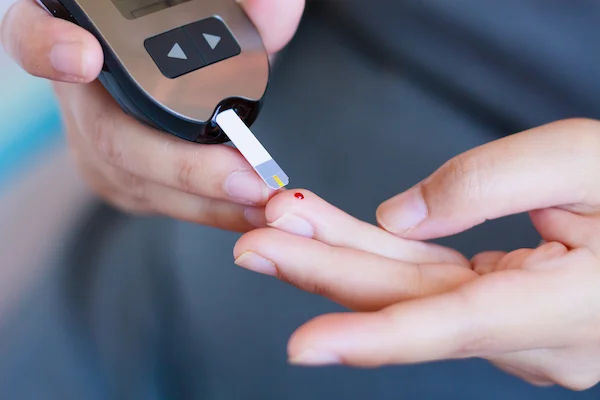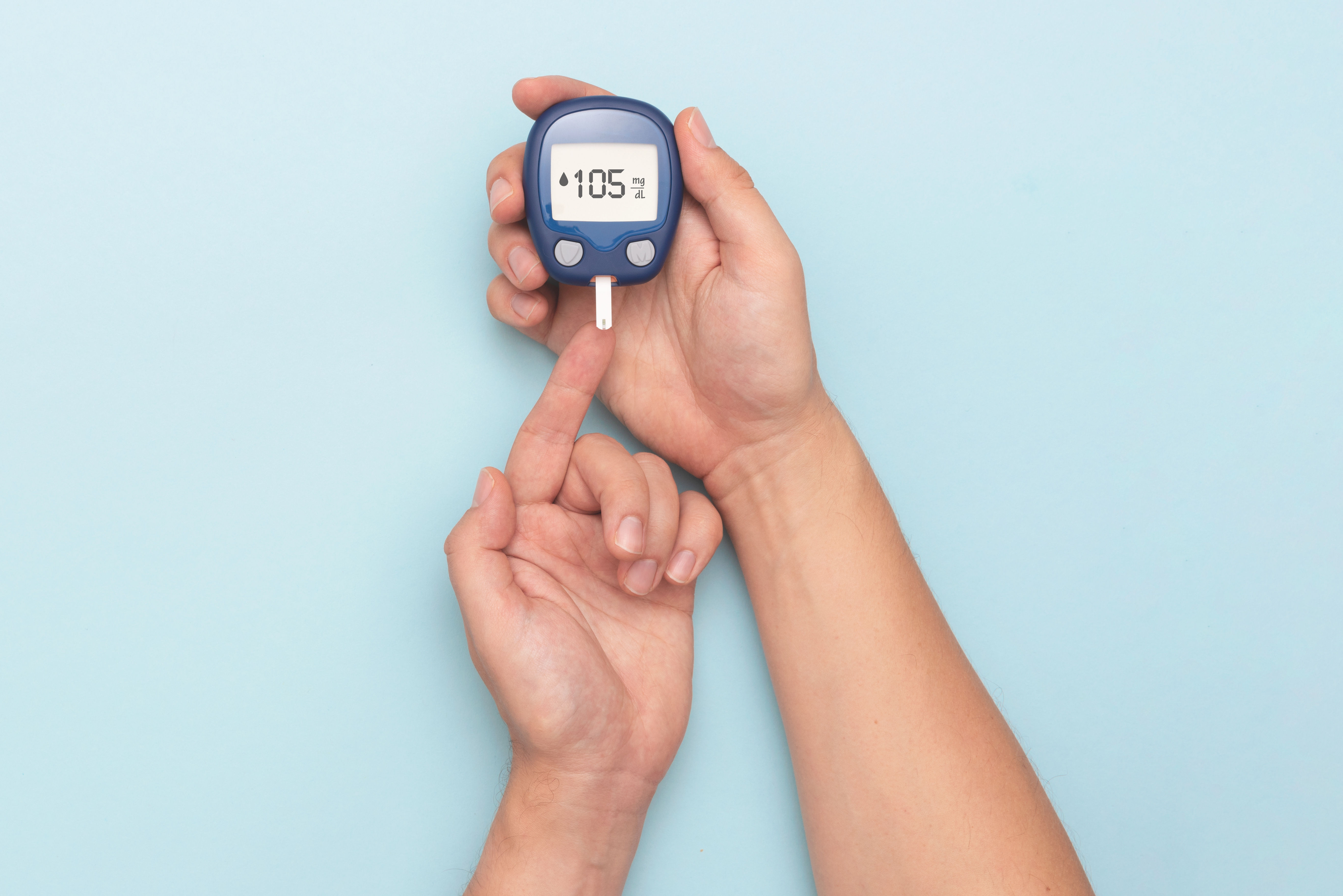Diabetic Foot and Eye Tests for Early Detection
Learn about diabetic foot and eye complications, their symptoms, prevention, and treatment options. Protect your vision and foot health with expert insights.

Written by
Last updated on 3rd Jul, 2025
Diabetes is a lifelong condition that affects how the body regulates blood sugar levels, often leading to complications that impact overall health. Among these complications, issues related to foot and eye health are particularly concerning and can have serious consequences if left unaddressed.
This article highlights the importance of diabetic foot and eye tests, explaining why they are essential for early detection and management. It also delves into testing procedures and the role of regular monitoring in comprehensive diabetic care.
Diabetic Foot: Understanding the Risks
Diabetic foot is the term for complications of prolonged high blood sugar, including ulcers and amputations. Diabetic foot problems arise primarily from two factors:
Peripheral Neuropathy: This condition is characterised by reduced sensation due to nerve damage.
Peripheral Arterial Disease: Poor circulation in the blood vessels prevents healing and is a risk factor for infection and ulcers.
Common Foot Complications and Symptoms in Diabetics
Diabetes can lead to nerve damage, known as diabetic neuropathy, which is associated with:
Pain or tingling sensations in the feet that continue for a long time
Unnoticed injuries, such as blisters, embedded objects, or sores
Cuts and sores aren’t noticed until they get cloudy and can lead to serious infections. Reduced blood flow to the feet caused by diabetes can contribute to:
Trouble healing sores and infections
Untreated or poorly healing infections leading to the development of gangrene
In advanced cases, amputation may be necessary to:
Prevent the spread of infections to other parts of the body
Protect the patient’s overall health and life
Having proper foot care can decrease the chances of complications like infections or gangrene. In rare instances, diabetic neuropathy may cause Charcot’s foot, which is distinguished by:
Redness, warmth, and swelling in the feet
A structural change that moves or breaks bones, resulting in a recognised ‘rocker bottom’ deformity
Warning signs of foot diseases from diabetes include:
Prolonged swelling or redness
Foot pain or tenderness
Sensations such as numbness or tingling
Wounds that fail to heal
Unusual changes in skin colour or temperature
Types and Objectives of Diabetic Foot Tests
A regular foot examination includes tests focusing on sensory, vascular and structural health. Foot examinations aim to:
Search for early warning signs of neuropathy and circulatory problems
Prevent minor issues from aggravating
Reduce risk of incidents and promote overall foot health
Diabetic foot assessments are crucial for identifying potential complications early on. These tests help evaluate various aspects of foot health:
Sensory Tests: Tools like monofilaments are used to assess nerve function and sensitivity in the feet.
Vascular Tests: These tests evaluate blood flow to detect any circulatory issues.
Structural Assessments: Foot shape and alignment are examined to identify any deformities or risk of ulcers.
Healthcare professionals recommend annual foot exams for asymptomatic diabetics, with the frequency increasing based on risk level.
For those at low risk, exams should be conducted once a year.
For moderate-risk individuals, exams are recommended every three to six months.
High-risk individuals may require exams every one to two months or even weeks, depending on the specific concerns.
Diabetic Eye: Understanding the Risks
Diabetic eye disease is a major cause of vision impairment and blindness among individuals with diabetes. Several serious eye conditions caused by diabetes include:
Diabetic Retinopathy: Vision loss resulting from damage to the blood vessels in the retina
Macular Oedema: Swelling in the macula, which causes blurred vision
Cataracts: Earlier clouding of the eye's lens
Glaucoma: Damage to the optic nerve caused by increased eye pressure
Types and Objectives of Diabetic Eye Tests
To prevent or monitor diabetes-related vision problems, one needs to undergo eye examinations. Regular eye tests help:
Detect complications such as retinopathy and macular oedema early
Find asymptomatic conditions and protect ocular health
Monitor the progress of existing conditions
Protect vision with guided treatment strategies
Regular eye exams are crucial for detecting potential issues related to diabetes. Some common diagnostic tools include:
Dilated Eye Exams: Provides a detailed examination of the retina and optic nerve
Retinal Photography: High-resolution images capture the retina to identify abnormalities
Optical Coherence Tomography (OCT): Delivers detailed cross-sectional images of the retina for closer analysis
Diabetic patients should have annual eye examinations with known complications. People with poor blood glucose control need more frequent exams.
Managing Test Results
Accurate interpretation of test results is crucial for effective diabetes management. It is important that these results are discussed with the patient to guide treatment decisions.
The assessments help classify individuals into three risk categories:
Low Risk: No issues or minor calluses present
Moderate Risk: Changes in foot shape or sensory loss, with one-foot problem identified
High Risk: Multiple issues, such as previous ulcers, amputations, or requiring dialysis
Following a diagnosis, appropriate actions may include:
Specialist Consultation: For foot care, one must consult a podiatrist and an ophthalmologist for comprehensive eye examinations.
Blood Glucose Control: Individuals must follow a structured diabetes management plan, including diet, exercise and medication.
Appropriate Care: This includes properly fitted footwear to protect the feet while adhering to prescribed eye treatments, including medications or surgeries.
Continuous monitoring ensures:
Management of complications
The right interventions at the right time, before things get severe
Overall, better health outcome
Prevention and Self-Care Tips
Diabetic retinopathy, a leading cause of blindness, can also hinder foot healing and elevate the risk of infection and amputation. Effective blood sugar management is crucial for protecting both ocular and foot health.
Consuming omega-3-rich fatty fish, such as salmon or mackerel, may help reduce the risk of diabetic retinopathy and enhance vascular health.
Wearing sunglasses can help shield the eyes from harmful UV (ultraviolet) rays.
The Role of Lifestyle in Prevention
Diabetes management and prevention of complications is based on a healthy lifestyle.
Keeping the blood sugar level on track requires a proper diet balanced with controlled carbohydrate intake.
Regular physical activity helps blood circulation and reduces the risk of nerve damage.
Quitting smoking may improve circulation and reduce the risk of complications.
Limiting alcohol can help keep blood sugar levels from spiking.
Conclusion
Early diagnosis and management of diabetic foot and eye complications is vital with diabetic foot and eye tests. Regular screenings, along with a good proactive attitude to health, can prevent severe outcomes.
Awareness and education empower diabetics to take control of their health. Individuals can benefit by leading healthier, complication-free lives by prioritising testing and taking preventive measures.
Consult Top Diabetologist
Consult Top Diabetologist

Dr. Lakshmi Sindhura Kakani
General Physician/ Internal Medicine Specialist
10 Years • MBBS, MD (General medicine)
Visakhapatnam
Apollo 24|7 Clinic - Andhra Pradesh, Visakhapatnam

Dr. Suraja Nutulapati
General Physician/ Internal Medicine Specialist
10 Years • MBBS, MD (Internal Medicine)
Hyderabad
Apollo 24|7 Clinic, Hyderabad
(850+ Patients)

Dr. Lakshmi Sanjitha Kakani
General Physician/ Internal Medicine Specialist
6 Years • MBBS, MD (General Medicine)
Visakhapatnam
Apollo 24|7 Clinic - Andhra Pradesh, Visakhapatnam

Dr. Utsa Basu
Diabetologist
14 Years • MBBS , MD
Barasat
Diab-Eat-Ease, Barasat
(75+ Patients)

Dr. Utsa Basu
Diabetologist
14 Years • MBBS, MD
Kolkata
Dr Utsa Basu Clinic, Kolkata
(375+ Patients)


